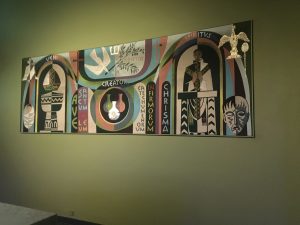Given the massive literature on so-called rationality in the social sciences, it gives one pause to observe what a dark palimpsest the annals of rational choice has become. The modern economist, who avoids philosophy and psychology as the couch potato avoids the gym, has almost no appreciation for the rich archive of paradoxes of rationality. This has come to pass primarily by insisting upon a distinctly peculiar template as the necessary starting point of all discussion, at least from the 1950s onwards. Neoclassical economists frequently characterize their schema as comprising three components: (a) a consistent well-behaved preference ordering reflecting the mindset of some individual; (b) the axiomatic method employed to describe mental manipulations of (a) as comprising the definition of “rational choice”; and (c) reduction of all social phenomena to be attributed to the activities of individual agents applying (b) to (a). These three components may be referred to in shorthand as: “utility” functions, formal axiomatic definitions (including maximization provisions and consistency restrictions), and some species of methodological individualism.The immediate response is to marvel at how anyone could have confused this extraordinary contraption with the lush forest of human rationality, however loosely defined. Start with component (a). The preexistence of an inviolate preference order rules out of bounds most phenomena of learning, as well as the simplest and most commonplace of human experiences—that feeling of changing one’s mind. The obstacles that this doctrine pose for problems of the treatment of information turns out to be central to our historical account. People have been frequently known to make personally “inconsistent” evaluations of events both observed and unobserved; yet in rational choice theory, committing such a solecism is the only real mortal sin—one that gets you harshly punished at minimum and summarily drummed out of the realm of the rational in the final analysis. Now, let’s contemplate component (b). That dogma insists the best way to enshrine rationality is by mimicking a formal axiomatic system—as if that were some sterling bulwark against human frailty and oblique hidden flaws of hubris. One would have thought Gödel’s Theorem might have chilled the enthusiasm for this format, but curiously, the opposite happened instead. Every rational man within this tradition is therefore presupposed to conform to his own impregnable axiom system—something that comes pre-loaded, like Microsoft on a laptop. This cod-Bourbakism ruled out many further phenomena that one might otherwise innocently call “rational”: an experimental or pragmatic stance toward the world; a life where one understands prudence as behaving different ways (meaning different “rationalities”) in different contexts; a self-conception predicated on the possibility that much personal knowledge is embodied, tacit, inarticulate, and heavily emotion driven. Furthermore, it strangely banishes many computational approaches to cognition: for instance, it simply elides the fact that much algorithmic inference can be shown to be noncomputable in practice; or a somewhat less daunting proposition, that it is intractable in terms of the time and resources required to carry it out. The “information revolution” in economics primarily consisted of the development of Rube Goldberg–type contraptions to nominally get around these implications. Finally, contemplate component (c): complaints about methodological individualism are so drearily commonplace in history that it would be tedious to reproduce them here. Suffice it to say that (c) simply denies the very existence of social cognition in its many manifestations as deserving of the honorific “rational.”There is nothing new about any of these observations. Veblen’s famous quote summed them up more than a century ago: “The hedonistic conception of man is that of a lightning calculator of pleasures and pains, who oscillates like a homogeneous globule of desire of happiness under the impulse of stimuli that shift him about the area, but leave him intact.” The roster of latter-day dissenters is equally illustrious, from Herbert Simon to Amartya Sen to Gerd Gigerenzer, if none perhaps is quite up to his snuff in stylish prose or withering skepticism. It is commonplace to note just how ineffectual their dissent has been in changing modern economic practice.Why anyone would come to mistake this virtual system of billiard balls careening across the baize as capturing the white-hot conviction of rationality in human life is a question worthy of a few years of hard work by competent intellectual historians; but that does not seem to be what we have been bequeathed. In its place sits the work of (mostly) historians of economics and a few historians of science treating these three components of rationality as if they were more or less patently obvious, while scouring over fine points of dispute concerning the formalisms involved, and in particular, an inordinate fascination for rival treatments of probability theory within that framework. We get histories of ordinal versus cardinal utility, game theory, “behavioral” peccadillos, preferences versus “capacities,” social choice theory, experimental interventions, causal versus evidential decision theory, formalized management theory, and so forth, all situated within a larger framework of the inexorable rise of neoclassical economics. Historians treat components (a–c) as if they were the obvious touchstone of any further research, the alpha and omega of what it means to be “rational.” Everything that comes after this is just a working out of details or a cleaning up of minor glitches. If and when this “rational choice” complex is observed taking root within political science, sociology, biology, or some precincts of psychology, it is often treated as though it had “migrated” intact from the economists’ citadel. If that option is declined, then instead it is intimated that “science” and the “mathematical tools” made the figures in question revert to certain stereotypic caricatures of rationality.” [Mirowski and Nik-Khah 2017, locations 318-379 of the Kindle edition].
Reference:
Philip Mirowski and Edward Nik-Khah [2017]: The Knowledge We Have Lost in Information: The History of Information in Modern Economics. Oxford, UK: Oxford University Press.

